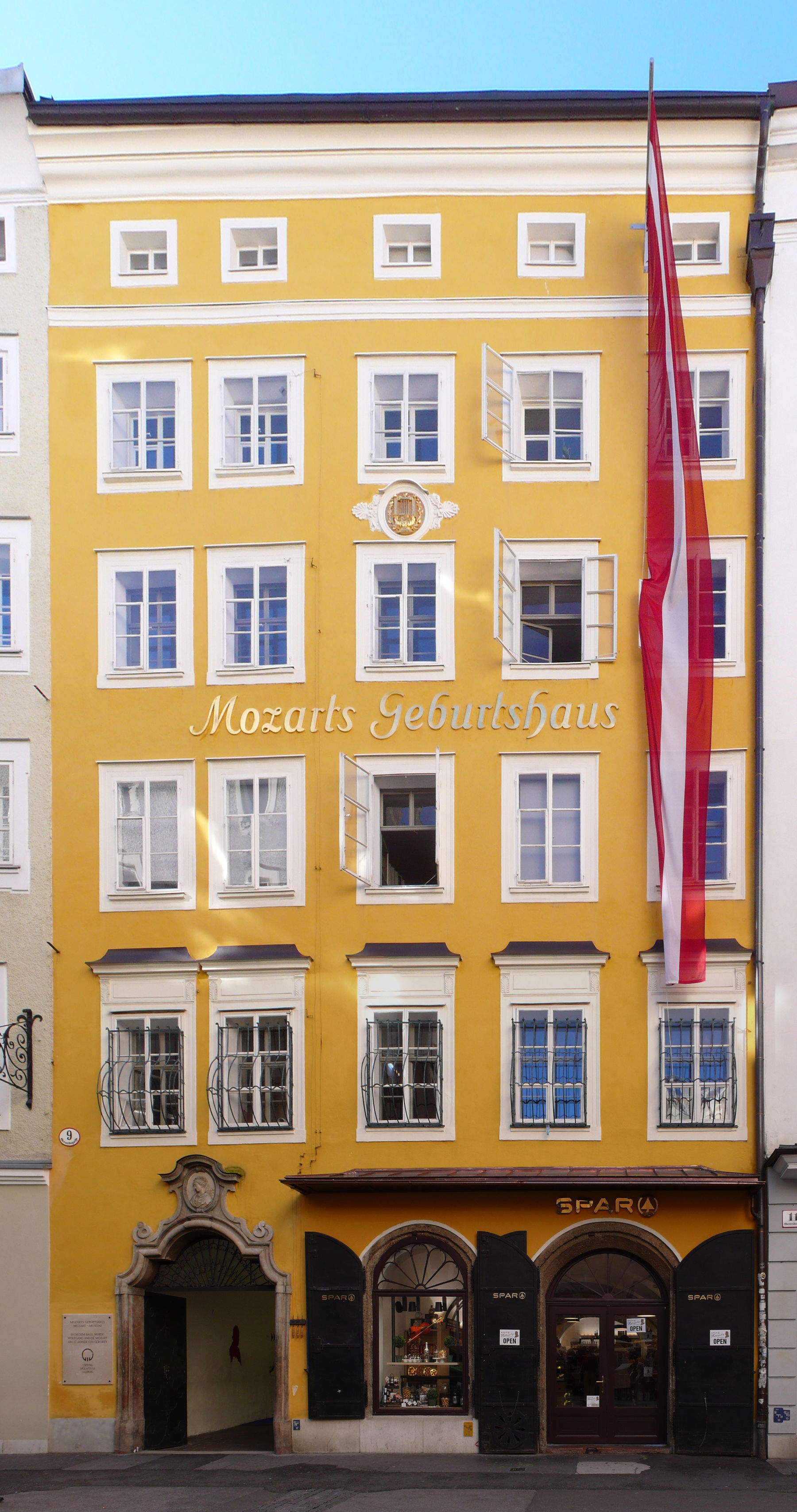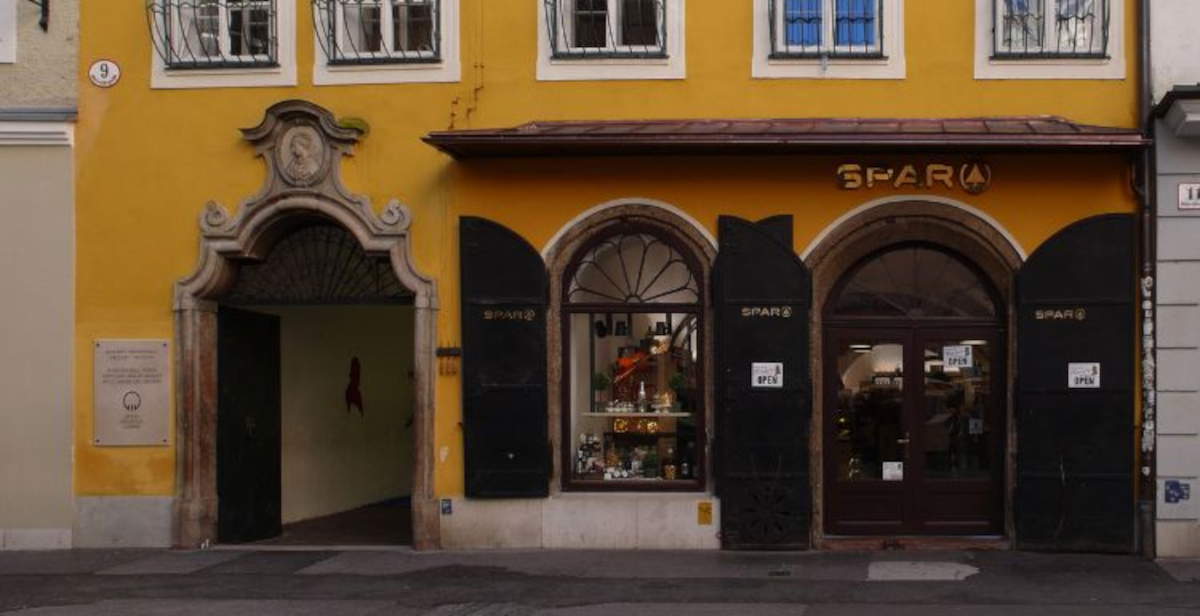The birth house of Wolfgang Amadeus Mozart (Salzburg, 1756 - Vienna, 1791), also called Mozarts Geburtshaus, in Salzburg, Austria, is one of the most visited destinations by tourists. Nevertheless, an unusual detail draws the attention of those who linger on the urban layout surrounding the museum. Indeed, on the ground floor of the same building that houses the house-museum, built in the 12th century, there is a Despar supermarket. This was pointed out this morning by the portal Dagospia . The entrance, recognizable by the shutters decorated in a style vaguely reminiscent of ornamental elements compatible with the historic area, is set in a context of strong symbolic value. The presence of such a commercial activity inside a building of such cultural importance could provoke mixed comments, especially because of the contrast between the historical identity of the place and the modern, ordinary function of the store.
In any case, that of Despar in Salzburg is not a recent opening. A check on the images available on the international photo portal Alamy and Google Maps reveals that the Despar supermarket was already operational in 2017. The photographs, taken in that year and still available online, document the presence of the sign and the setting in the context of the house-museum. The item could thus shift the debate from the level of topicality to that of the management of historic centers and sites of cultural interest, where economic and preservation logics have long been linked.

The reason? In historic centers with strong tourist appeal, the line between cultural enjoyment and commercial exploitation tends to become increasingly blurred. Indeed, the need to keep local economic life alive clashes with the expectations of those who see certain symbolic places as a space to be preserved almost intact. In the case of Salzburg, the choice to host a food business in such an important place seems to have been integrated without disrupting the architectural appearance of the building, but it certainly does not eliminate the perception of a contrast between the image of the composer and the everydayness of a supermarket.
Wolfgang Amadeus Mozart, lived with his family in the building’s third-floor apartment from 1747 until 1773, when they moved to Makartplatz. The birth house, converted into a museum in 1880 by the Mozarteum Foundation, is still a must-see for lovers of the composer and history. During the approximately one-hour tour, visitors can explore the original rooms, reconstructed in 18th-century bourgeois style, and admire authentic objects, documents, letters and portraits. Among the attractions presented by the museum are historical instruments, such as the violin and clavichord that belonged to Mozart as a child.
 |
| Is it right that on the first floor of Mozart's Birthplace there is a supermarket? |
Warning: the translation into English of the original Italian article was created using automatic tools. We undertake to review all articles, but we do not guarantee the total absence of inaccuracies in the translation due to the program. You can find the original by clicking on the ITA button. If you find any mistake,please contact us.